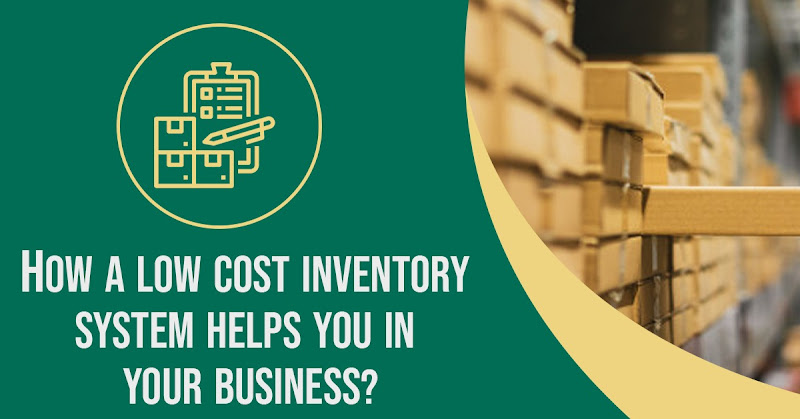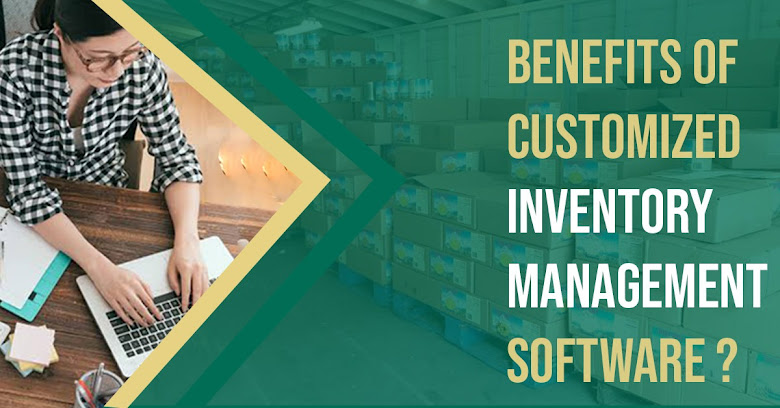How a low-cost inventory system helps you in your business?
The inventory system is the portion of
supply chain management that targets to always have the right products in the
right amount for sale, at the right time. When done efficiently, businesses
reduce the costs of carrying additional inventory while maximizing sales. Good inventory management can help you way your inventory in real-time to rationalize
this process.
By efficiently managing your inventory
you can have the right products to the right extent on hand and evade products
being out of stock and funds being occupied in excess stock. You can also guarantee
your products are sold in time to avoid waste or undesirability or spending too
much money on a stock that is taking up space in a warehouse or stockroom.
Here in this article, we will discuss
how a low-cost inventory system helps
you in your business.
Low-cost
inventory system
techniques and best practices for small business
Here are some of the
techniques that many small businesses use to improve their business.
Ø
Fine-tune your forecasting. Precise forecasting is vibrant. Your projected sales
calculations should be centered on factors such as historical sales figures,
market trends, expected growth, and the economy, promotions, marketing efforts,
etc.
Ø
Use the FIFO approach (first
in, first out). Goods should be
sold in the same sequential order as they were bought or produced. This is
especially important for delicate products like food, flowers, and makeup. A
bar owner, for example, has to be aware of the materials behind the bar and
apply FIFO methods to a low-cost
inventory system. It’s also a good idea for nonperishable goods since items
sitting around for too long might become smashed, or otherwise outdated and
unsellable. The best way to apply FIFO in a storeroom or warehouse is to add
new items from the back so the older goods are at the front.
Ø
Identify low-turn stock. If you have stock that hasn’t retailed at all in the last
six to 12 months, it’s perhaps time to stop selling that item. You might also ponder
different approaches for getting rid of that stock — like an exceptional
discount or promotion — since additional stock wastes both your space and investment.
Ø
Audit your stock. Even with a good low-cost
inventory system, periodically you still need to count your inventory to
make sure what you have in stock matches what you think you have. Businesses
use different methods, including an annual, year-end physical inventory that counts every single element and ongoing examination, which
can be most advantageous for products that are moving fast or have stocking problems.
Ø
Use cloud-based inventory
management software. Look for
software with real-time transaction analytics. The software connects directly
to your point
of sale, so your stock stages
are spontaneously adjusted every time you make a sale. Receive daily stock observant
emails so you always know which objects are low or out of stock so you can
order more in time.
Ø
Track your stock levels at all
times. Have a compact system in place for
tracking your stock levels, ranking the most expensive products. Actual
software saves your time and money by doing much of the dense lifting for you.
Ø
Reduce equipment repair times. Vital machinery isn’t always in working order, so it’s significant
to manage those resources. A cracked piece of machinery can be costly.
Monitoring your machinery and its parts is essential to understanding its life
cycle, so you can be prepared before problems arise.
Ø
Don’t forget quality control. No matter your specialty, it’s important to certify that
all your products look great and are working fine. It could be as modest as
having employees do a quick inspection during stock audits that contains a
checklist for symbols of damage and correct product cataloging. Quality control
is very essential for a low-cost
inventory system to help you in your business.
.
Schedule an ERP Gold demo that helps you to understand how a
low-cost inventory system helps you in your business.




Comments
Post a Comment